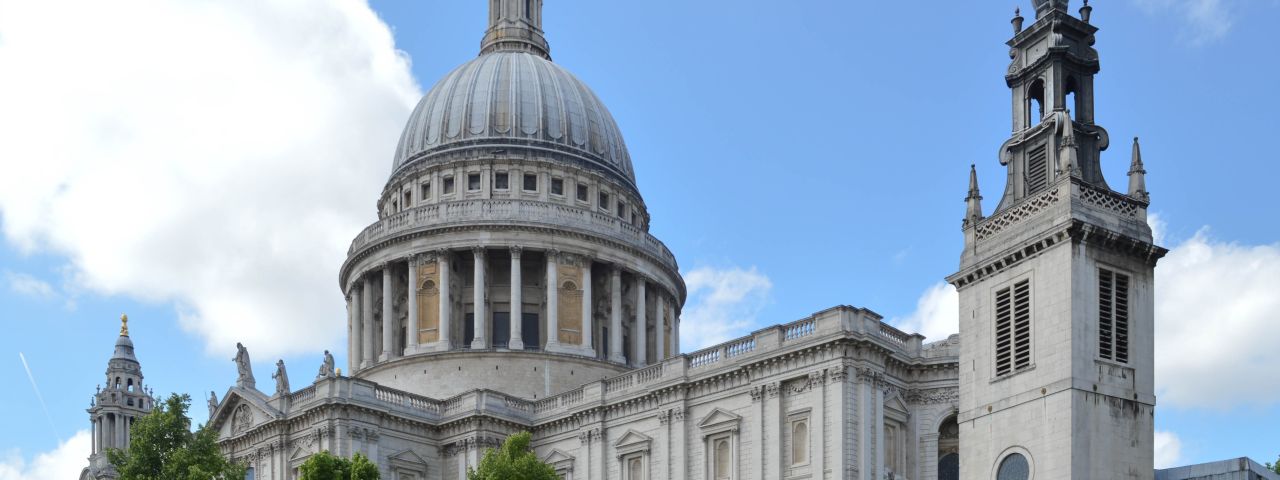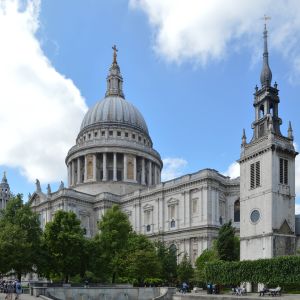St. Paul's Cathedral
Sightseeing attraction | London | England | United Kingdom
Historical landmarks in London
The St. Paul's Cathedral in London is one of the most significant and well-known churches in Britain. It was designed by Sir Christopher Wren and built between 1675 and 1710, after its predecessor was destroyed in the Great Fire of London in 1666. The cathedral is an outstanding example of English Baroque style and impresses with its majestic dome, which was the tallest building in London for a long time, standing at 111 meters high.
Architectural masterpieces in Britain
The history of St. Paul's dates back to the year 604 AD, when the first church in honor of the Apostle Paul was built on this site. Over the centuries, several churches were built at the same location, but were destroyed by fires and other disasters. The current cathedral is therefore the fourth building on this site.
Artworks in St. Paul's Cathedral
Architecturally, the cathedral combines various style elements. The magnificent west façade with its two towers and monumental portico is a striking feature. The dome, inspired by Michelangelo's design for St. Peter's Basilica in Rome, dominates the skyline of London and consists of three layers: an inner dome, an outer dome, and a supporting structure in between.
Significant events in the cathedral
Inside the cathedral, there are numerous artworks, mosaics, and monuments. Particularly notable is the Whispering Gallery in the dome, known for its exceptional acoustics: a whispered word on one side of the gallery can be clearly heard on the opposite side.
Crypt with famous personalities
St. Paul's has been the site of many significant events in British history, including the funerals of Admiral Lord Nelson and Sir Winston Churchill, as well as the wedding of Prince Charles and Lady Diana Spencer in 1981. During World War II, the cathedral was only slightly damaged in the air raids on London and was seen as a symbol of the city's resilience.
The crypt of the cathedral houses the tombs of numerous prominent figures, including Sir Christopher Wren himself, whose tombstone bears the Latin inscription: "Si monumentum requiris, circumspice" - "If you seek a monument, look around."


















































































































































